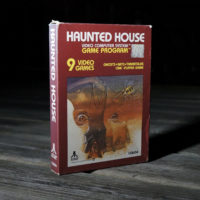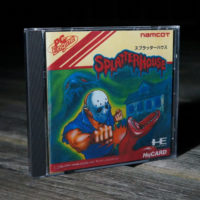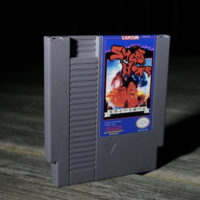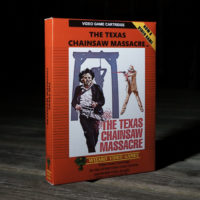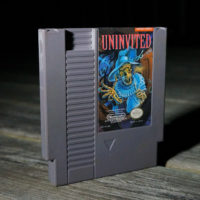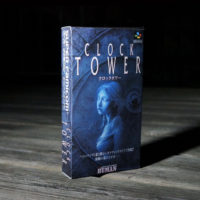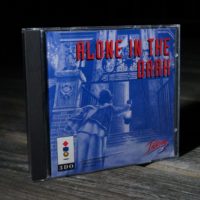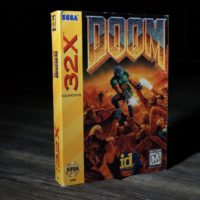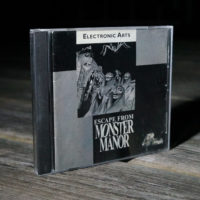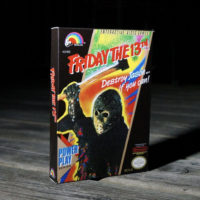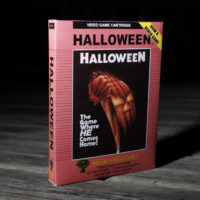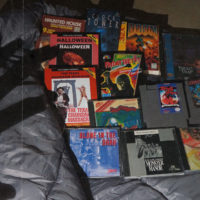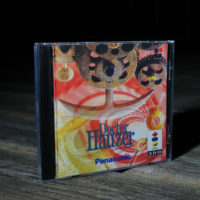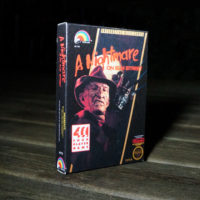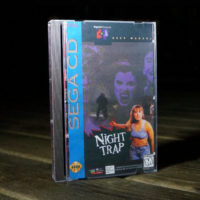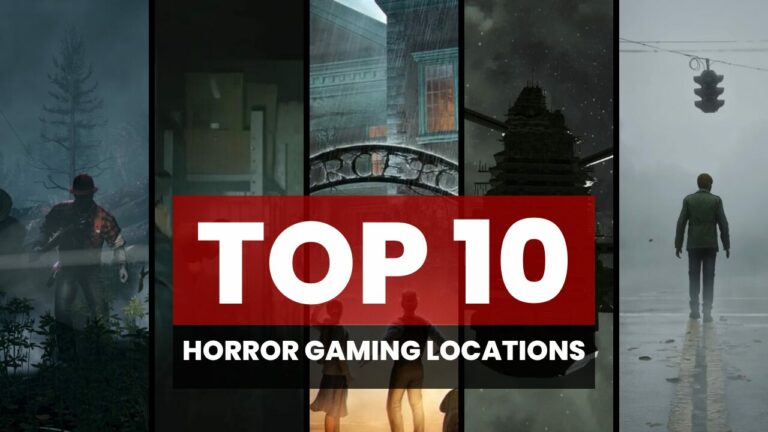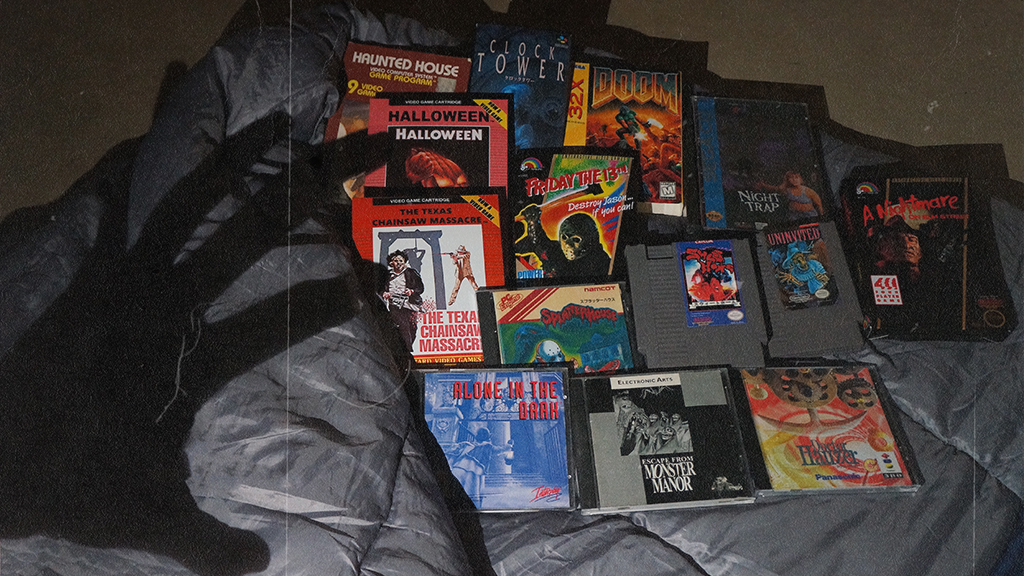
Generations of Horror is a new series of articles that will journey through the history of console horror gaming by focusing on a certain era or generation of game consoles, discussing some of the most unique, important, or pioneering titles from those periods.
First up is the primeval days of the horror gaming genre, starting back with the Atari 2600 and going up to the early 1990s. Since there were so relatively few console horror games in these early days, the first few console generations will be combined in this article.
As gaming has changed with time, many will say that horror games have gotten more complex and arguably more scary or immersive. However, even with these humble beginnings in low-bit pixel graphics and primitive machine-based sound capabilities, these games show early examples of violence, gore, survival, jumpscares, creepy sound design, and many other elements that continue to be cornerstones of the horror gaming genre today.
*All photos by the author from personal collection, a full-size gallery can be viewed at the end
_____________________________________________________________
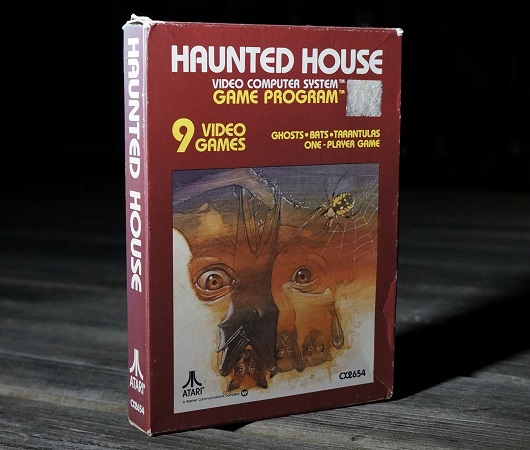
Haunted House
Atari 2600, released February 1982
As a young child in the 1980s, I had the fortunate birthright of my grandparents owning an Atari 2600 since before I was born, which kickstarted my love for video games extremely early. Due to the console being so much more available and affordable after the Video Game Crash of 1983, this also meant I had access to tons of games for the console as well.
Of all the games I had to choose from, there was always one that I never dared to put into the console and press the power button on, and that was Haunted House. While I would later find out that the game itself was not anywhere near as terrifying as my mind made it out to be, the creepy cover art made me avert my gaze any time I happened to see it in the shelf of games.
The main visual theme is that the whole game is pitch black besides your avatar (a pair of eyes) and some walls, and the only way you can see what’s around you is by lighting matches, which only give you a small area of visibility around your character for a short time before burning out. When finding items, you can only carry one at a time and must drop anything you are holding to pick up another. Bats, spiders, and ghosts randomly appear with a loud noise to startle and attack you, which also puts out your light source, forcing you to light another match.
Sound familiar? Make no mistake, those are early versions of the resource/inventory management, jumpscares and limited light mechanics that became some of the mainstays of the horror genre a decade down the road. Atari’s willingness to release a game that touched on horror in a way the young medium of video games had never seen before was the first step toward creating the genre that we all know and love today.
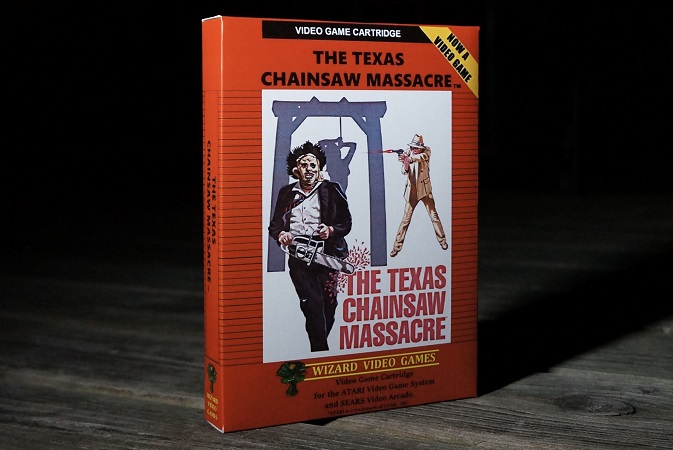
The Texas Chainsaw Massacre
Atari 2600, released March 1983
This strange video game adaptation of Tobe Hooper’s classic 1974 film marks the first time you get to play as the antagonist of the game since you are the one controlling Leatherface here, as he hunts down young girls with his chainsaw.
You must collect gas cans to keep your chainsaw running, as well as avoid obstacles such as wheelchairs (because people just leave those lying around,) and bushes (which apparently stop a guy with a device meant to destroy them) so you can kill as many girls as possible. The girls emit a high-pitched beep (scream) when they see you, as they start to run away.
The sound design, graphics, and pretty much everything else here is bottom-of-the-barrel, but it was also the first time a console game had featured such implied violence. Most retailers even refused to carry the game around its release, as this was unprecedented at the time.
We’d find out later that this kind of violence would be amped up and made more realistic in video games by the early 90s, but in 1983, this was worse than most people could even imagine video games being.
The element of being able to control the antagonist in a horror game has reared its head many times over the years in games like Lucius, Dead by Daylight, Last Year, Manhunt, and Friday the 13th (2017,) among others, and I think we can safely say that this early TCM game is the origin of that idea. Hell, Leatherface is even a playable character in Dead by Daylight, if you wanted to see even more of a parallel here.

Halloween
Atari 2600, released October 1983
Besides the obviousness of being based on the granddaddy of all slasher films, Halloween for Atari 2600 made some interesting steps into the horror gaming genre, even if the game didn’t offer much in the way of fun gameplay.
It features the theme song from Halloween, somewhat annoyingly re-created on the 2600 sound chip, as well as the legendary stalker, Michael Myers himself, who stalks you from room to room inside this house with flickering lights and children to save.
While there’s no scripted jump scares here, Michael will appear quite often and possibly startle you, even if he doesn’t pose much of a threat, due to his slow movement compared to your own. His sprite model and animation are surprisingly well-done for a 2600 game, even though his bark is much louder than his bite, so to speak.
All these elements come together to create a pretty lackluster game, as far as gameplay goes, but the aesthetics were as close to the movie as you could get on a console at the time and can still create a little bit of unease or tension, despite its overall technical and creative limitations.
Just like his buddy Leatherface, Michael also made his way into the modern horror multiplayer slasher, Dead by Daylight just a few years ago, showing he’s still a force in gaming all these years later.
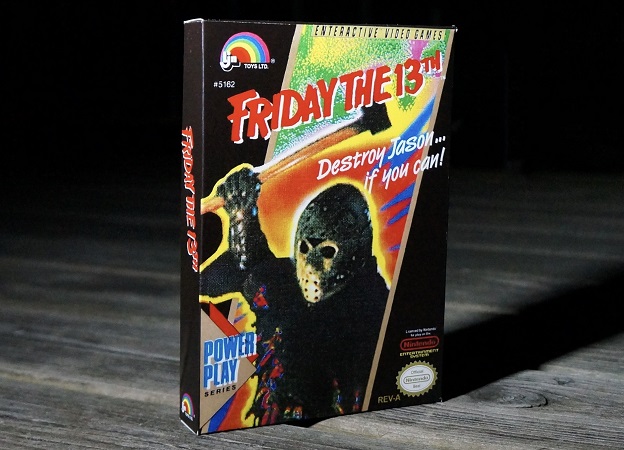
Friday the 13th
Nintendo Entertainment System, released February 1989
Despite topping countless “worst game of all time” lists throughout the years for its absolutely dreadful music and sound effects, extremely unfair difficulty, and lack of direction for the player, LJN’s game-of-the-movie Friday the 13th did introduce some pretty important survival and enemy mechanics that would become much more commonplace as the genre moved forward.
The game starts you with six camp counselors to play with, all in different areas of the map, and you must keep track of them all, while also rescuing children, finding hidden items or areas. On top of all this, you’re also tasked with fighting off a relentless Jason Voorhees, who appears completely at random, anywhere on the map, often leaves you no real defense against his attacks, not to mention scaring the hell out of you when he appears suddenly with a loud noise and starts throwing weapons at you.
Even if you have the weapons to combat Jason, he can often kill you in just 3 or 4 swipes of his ax, whereas you need to hit him dozens of times to knock him down once (and it takes three times to kill him and finish the game.) All these things made most players pull their hair out and shut the game off pretty quickly, but some did persevere, and eventually figure out how to best this daunting challenge.
Friday the 13th has found its eventual audience over the years, with many people coming around to enjoying the game and its unfair absurdity, seeing it as a challenge, and one guy even wrote a book about it. It’s contributions in horror come from extreme difficulty and an enemy who constantly pursues you, which would pave the way for things like Clock Tower and Resident Evil 3 alike.
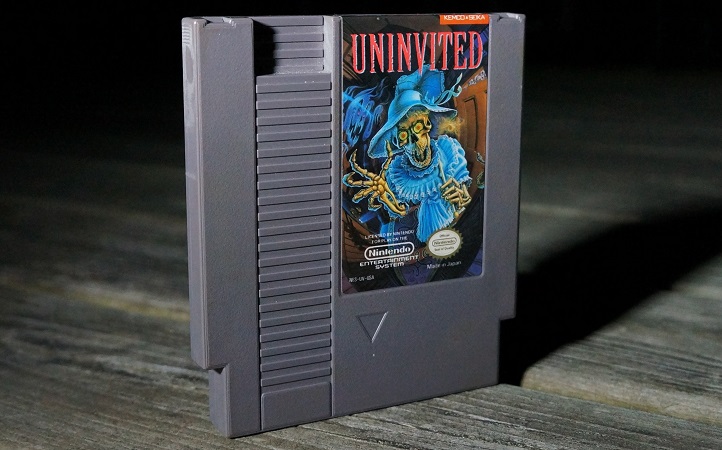
Uninvited
Nintendo Famicom/NES, released September 1989
Originally released as a PC game in 1986, Uninvited is a point-and-click horror adventure that has you waking up in front of a giant mansion after a car crash and going inside to search for your sister. As you explore the mansion, you run into several undead creatures as well as other types of classic horror monsters, and you must find your way past them all to reach the end.
Point-and-click horror was a genre that was very rarely ever ported to consoles back in the early days of consoles, so this one stands out as unique among its kind. This was also integral in introducing many people to this style of game back at a time when few people had PCs equipped to play games yet.
Uninvited features tons of complex puzzles, backtracking, life-or-death decisions, lots of horror aesthetics ranging from classical or Gothic imagery, as well as plenty of occult references. Some of the material that touched on the occult/religious or gory aspects were even censored out of the NES version over Nintendo’s fears of being potentially offensive.
Featuring a great soundtrack and colorful visuals, as well as some startling imagery, Uninvited is a great early example of the point-and-click adventure style, and the NES port is often considered better than the original version in many ways. This is worth a look not only for its uniqueness as a console port of a rarely-ported genre but because of its innate quality as a game in general.
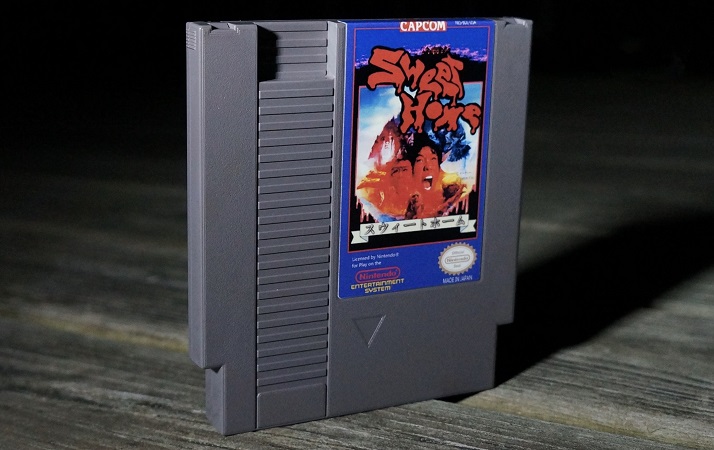
Sweet Home
Nintendo Famicom, released December 1989
While anyone who would come to this site is surely familiar with 1996’s Resident Evil, not as many would know about this game, which served as a prototype of sorts, for what would become the first Resident Evil game. Sweet Home is a horror RPG by Capcom, based on a Japanese film with the same name, about a group of filmmakers who go to a haunted mansion to find some treasured pieces of art.
While the gameplay doesn’t do a whole lot to set itself apart from a pretty typical 8-bit RPG game, it’s the aesthetics and overall themes that made it so impactful and popular in the horror genre. It features a party of characters where each one has their unique skill or item, and each one is required to pass certain puzzles or complete certain actions in the game.
As you travel around the mansion and fight various monsters and spirits, you will quickly realize that if any one of the characters dies, they are permanently dead with no way to revive them. As a result, you must pick up their items and continue, even swapping items between characters if needed, to make sure you have what you need to progress (not unlike Resident Evil Zero or ObsCure, etc.)
The number of characters left alive at the end of the game affects the ending in various ways, which was also an element in Resident Evil many years later, along with the element of certain characters having unique items, similar to RE‘s lockpick/lighter, etc.
While an English fan translation is available, it was unfortunately never released outside of Japan, but Sweet Home still features a plethora of elements that would become very popular in Resident Evil and other games from around the world. Things like tight inventory management, quick-time events, use of notes and logs as a storytelling element, visceral or gory imagery, and on-screen door opening sequences were all present here, just to name a few.
In its earliest stages of development, Resident Evil was being developed as a remake of Sweet Home, featuring a mansion and various other elements from Sweet Home, before being changed into a story about a corrupt pharmaceutical corporation and a zombie outbreak. The developers of Resident Evil have said that it would not exist today if it weren’t for Sweet Home, so I think we all owe a certain debt to the game somewhere along the line.
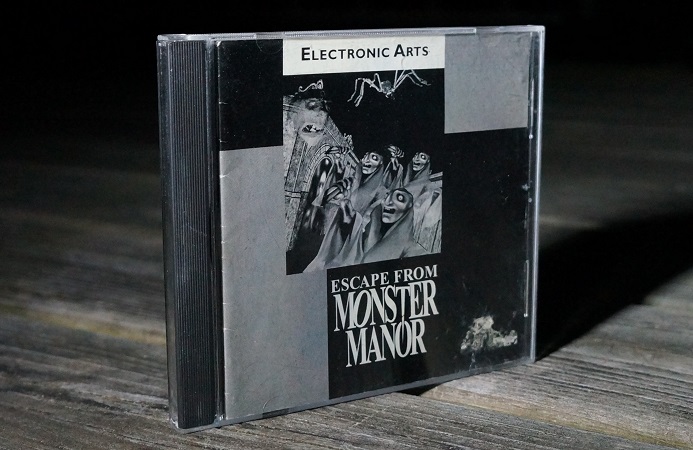
Escape from Monster Manor
Panasonic 3DO, released October 1993
When the Panasonic 3DO launched in 1993, it was the first standalone CD-based console to see a worldwide release, and the first to be fully capable of handling PC quality 3D graphics on a home console, even if it came at a high price tag. One of the first games released for 3DO, just three weeks after the console hit the market in 1993, was Escape from Monster Manor, a game that tackled some traditional horror themes in a first-person shooter format (also remember, this released months before Doom even came out on PC.)
Some of the developers have very accurately described Monster Manor as “Wolfenstein 3D in a haunted house,” which is an extremely fitting description, though that description does seem to downplay how heavily some of the horror themes are laid on here. While the shooting mechanics and level design can certainly leave a lot to be desired, the aesthetics and monster designs were definitely enough to shock many players.
It features various kinds of ghosts, spiders, floating skulls, and zombies, but also plenty of environmental objects and scenery that turns up the creep factor. There’s frequent, random ghosts that will pop up right in front of your face to give you a good jump-scare as well as enemies that follow you throughout the level and even sneak up behind you for a nasty surprise. Sometimes when you open doors or turn down a hallway, there will be some kind of creepy animation or event right in front of you, making for some more good startling effects from time to time.
Random screams and horrifying noises can be heard as you walk through the halls, and some creepy music also plays from at times, giving an extra layer of fear in such an early game. Ammo and health can also be very limited, making for high difficulty, and what some may refer to as relative survival elements. Monster Manor still provides some good shock value for being such an early 3D game and stands as probably the first truly 3D horror game released on home consoles.
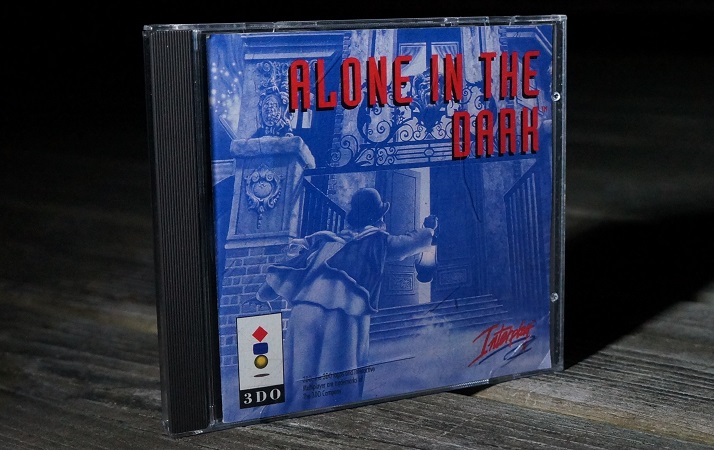
Alone in the Dark
Panasonic 3DO, released August 1994
After being released on PC in 1992, Alone in the Dark was considered a masterpiece by many, a new step forward in 3D gaming, as well as being considered the true beginning of the survival horror genre as we know it today.
AITD originally started development as an officially licensed Call of Cthulhu game, but later became something much more original and more important, while still retaining a lot of the Cthulhu mythos behind the story. It’s the first fully 3D horror game on console, taking place in a fully-rendered 1920s mansion with multiple floors and complexities, which also leads to some more complex gameplay and traversal.
Not only were the environments more advanced than any horror game before it, but so were the puzzles, the inventory system, and the combat, all having evolved past previous titles in the genre. AITD is seen as the true inspiration for Resident Evil in more than just concept, and those influences are so strong it’s almost staggering, to where, at times, Resident Evil almost feels like a remake or reimagining of AITD.
Alone in the Dark was finally ported to the 3DO in 1994, allowing a new audience to experience what it had to offer, and starting a new era for console horror gaming.
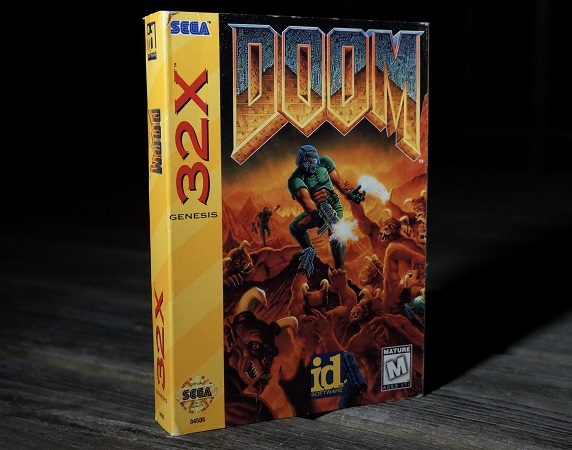
Doom
Sega 32X, released November 1994
While Doom did launch on PC in 1993, the first console port showed up in late 1994, with the Sega 32X port being the first to hit the market. Even though the 32X version was missing some content and features from the PC version, it was still the first taste that many gamers could get of the legendary first-person horror shooter.
Doom set some early standards for horror aesthetics in first-person games, with terrifying monsters, gory and visceral combat, limited supplies, dark and disturbing settings, and jump scares all being featured in spades.
Not much more can be said about Doom that most people don’t already know. It’s been ported to nearly every single device that’s able to play video games since the early 90s, showing the impact it had on the industry.
Doom‘s legacy continues literally into the current day, as the many sequels and the current reboot series are still highly regarded and well-loved in the games industry. There’s even a new Doom game, released here in 2020, on the same day as this writing gets posted. It can all be traced right back to the original, which had its first home console release with this one on Sega’s powerful but ill-fated 32X add-on for the Sega Genesis.
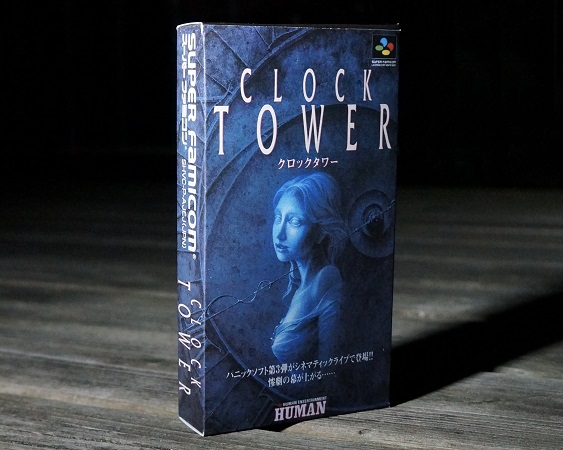
Clock Tower
Nintendo Super Famicom, released September 1995
Despite being a fully 2D horror game in the mid-90s when 3D gaming was already picking up momentum, Clock Tower still stands as one of the best horror titles ever made. Its original release on the Super Famicom shocked horror fans with its many groundbreaking elements of gameplay and storytelling as well as some very advanced sound and visual elements that felt far beyond what the Super Famicom was capable of.
Clock Tower is hugely inspired by Italian horror director Dario Argento’s 1985 film, Phenomena, to where even the main character looks exactly like the main character from the film. The story also follows many of the themes and scenarios from Phenomena as well as other classic horror films from that era, and the realistic digitized photo graphics used in Clock Tower just made the world that much more immersive and cinematic.
This was also the first horror game that truly focused on running and hiding from enemies instead of engaging them. It lets the player find various ways to avoid confrontation and out-smart the enemies instead of fighting. While there is an option to fight back to a small degree when things get very dire, you are generally far too weak to survive more than one encounter with any of the antagonists.
As previously mentioned, the sound design here is top-notch, especially considering the limited hardware of the Super Famicom. The audio here ranges from chilling silence where the only sounds you can hear are the ticking of a clock or your own footsteps, all the way to loud stingers and chaotic chase music when you encounter an enemy. This creates an amazing sense of atmosphere and tension that most people wouldn’t imagine could be created from the Super Famicom hardware.
There are 10 different endings in Clock Tower, all depending on how and when you die or survive, making replayability a huge factor, and having many different events and cutscenes to watch, which again, is all the more impressive given the game was released for Super Famicom and managed to contain cutscenes that felt cinematic.
Unfortunately, Clock Tower was never released outside of Japan, although there are English translation patches available for most versions of the game. Its influence is still felt in the horror genre today, where there are spiritual sequels and heavily inspired games still being released now in the late 2010s and even 2020. Games such as NightCry, Remothered, Outlast, Amnesia, and Alien: Isolation, where the focus is often on hiding, out-smarting, and avoiding enemies all owe their existence to the original Clock Tower.
_____________________________________________________________
Aside from the heavy-hitters mentioned above, there are a few other interesting horror-themed games from this era also worth checking out. These include Doctor Hauzer (1994, 3DO,) which expands on Alone In the Dark‘s 3D horror, Night Trap (1992, Sega CD,) the highly controversial, bizarre first step into live-action FMV horror-themed gaming, Splatterhouse (1990, PCE/TG16,) a gory horror-themed arcade brawler with a Friday the 13th-inspired lead, and A Nightmare on Elm Street (1989, NES,) a 2D platformer that takes you through the twisted dreamscapes of famous villain Freddy Krueger.
That wraps up the early days of horror for now, and hopefully, you’ve enjoyed this journey back in time and maybe even learned something or found a new game to check out along the way. The Generations of Horror series will continue with several more articles in the future, so stay tuned and please share any feedback or discussion you have in the comments!
Here are the full-size pictures:

 IDOLxISxDEAD
IDOLxISxDEAD